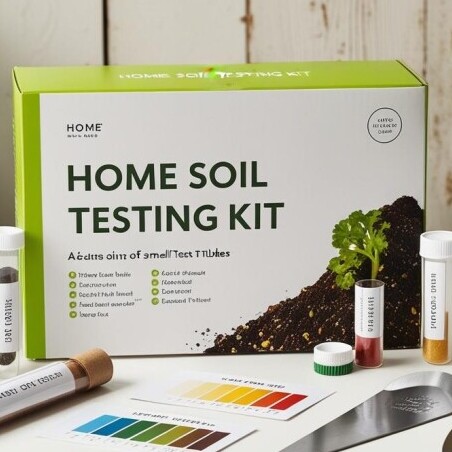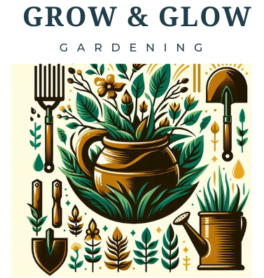Organic gardening is a back-to-basics approach that prioritizes harmony with nature. Instead of relying on synthetic chemicals, it embraces natural solutions and biological processes. Think of it as nurturing your plants with nature’s cookbook — only simple, wholesome ingredients allowed.
Why is organic gardening a great choice? For starters, it’s a win-win for both the environment and your dinner table. By ditching synthetic pesticides and fertilizers, you give Mother Earth a big ol’ hug. Plus, the fruits and veggies you grow are free from harmful residues, meaning healthier fare for you and your family.
Now, organic concepts aren’t new-fangled. They’ve been around for ages. Before the industrial age, our ancestors gardened and farmed organically by default. It’s a tried-and-true method that’s stood the test of time.
So, where do you fit in? Whether you’ve got a tight city balcony or a sprawling backyard, you can grow something organic. It’s about making the land work with you, respecting natural cycles, and savoring the process. Trust me, the journey is just as rewarding as the harvest.
Laying the Foundation: Starting Small & Choosing the Right Location
Starting an organic garden can feel like stepping into a whole new world, but it pays off to take baby steps. Picture this: your first garden plot causes you more joy than stress, with a manageable size and easy upkeep. Once you’ve got the hang of it, you can always expand later. It’s all about finding a balance that doesn’t overwhelm you or your plants.
Choosing the right spot for your garden is like picking a prime location for a new home – it’s got to have all the right things. Your plants will need loads of sunshine, just like us on a chilly day. Look for a spot that gets at least 6 to 8 hours of sunlight. Think about wind shelter too; a gentle breeze can help with pollination, but too much wind might be a bit too harsh.
Let’s chat a bit about your garden’s “microclimate.” These are small areas within your larger space that have different climate conditions just due to shading, water drainage, or airflow. Understanding these idiosyncrasies can help choose the best spots for different plants so each one can thrive.
So, why focus on just a small patch to start with and mix your environment selection carefully? Because setting your garden up right from day one is a total game-changer. Long story short, take it slow, find your prime location, and your organic garden will soon become your slice of Eden.
Building the Perfect Soil: Testing, Understanding, and Enhancing
Healthy soil is the backbone of any successful organic garden. You know that phrase ‘you reap what you sow’? Well, in gardening, it all starts with the dirt. It’s not just where plants grow – it’s where they thrive if treated right.
First things first, let’s get to know your soil. A simple home soil test can clue you in on what’s happening underground. You’ll want to check for things like pH levels and nutrient content. Don’t worry, you don’t need a degree in chemistry to figure this out! Kits are available that make it easy, giving you a snapshot of what needs some TLC.
 What happens if your soil isn’t up to par? This is where organic soil amendments step in like your garden’s personal blend of vitamins. Compost is the star player here, offering a natural boost of nutrients. Think of it like giving your plants a nutritious smoothie to kick off their morning.
What happens if your soil isn’t up to par? This is where organic soil amendments step in like your garden’s personal blend of vitamins. Compost is the star player here, offering a natural boost of nutrients. Think of it like giving your plants a nutritious smoothie to kick off their morning.
 Mulching is another way to keep your soil in good shape. It helps retain moisture, reduces those pesky weeds, and over time, enriches the soil as it breaks down. Whether you choose straw, bark, or shredded leaves, it’s like a cozy winter blanket for your plants.
Mulching is another way to keep your soil in good shape. It helps retain moisture, reduces those pesky weeds, and over time, enriches the soil as it breaks down. Whether you choose straw, bark, or shredded leaves, it’s like a cozy winter blanket for your plants.
 Understanding the composition of your soil isn’t just for bragging rights – it equips you to make decisions that will keep your garden flourishing. Once your soil is healthy, you’re laying down the groundwork (literally) for a bumper crop of fresh produce.
Understanding the composition of your soil isn’t just for bragging rights – it equips you to make decisions that will keep your garden flourishing. Once your soil is healthy, you’re laying down the groundwork (literally) for a bumper crop of fresh produce.
Choosing and Cultivating: The Art of Selecting Suitable Plants and Companions
Picking the right plants is like choosing your teammates – you want ones that go well together and make the overall experience enjoyable. When you’re new to organic gardening, it helps to select plants that are forgiving and less demanding. Some beginner-friendly choices include tomatoes, radishes, and lettuce, which tend to thrive in a variety of conditions.
 So, how do you decide what to plant? Consider your climate and the microclimates you’ve identified in your garden. Not every plant will love the same conditions, so mix it up a bit. Get familiar with your growing zone and plant accordingly. This way, you’ll avoid the disappointment of a plant that struggles simply because it’s the wrong fit.
So, how do you decide what to plant? Consider your climate and the microclimates you’ve identified in your garden. Not every plant will love the same conditions, so mix it up a bit. Get familiar with your growing zone and plant accordingly. This way, you’ll avoid the disappointment of a plant that struggles simply because it’s the wrong fit.
Here’s where things get interesting: companion planting. This method can supercharge your garden’s health and productivity. Some plants get along great together, boosting each other’s growth and keeping pests at bay naturally. For instance, planting basil near tomatoes can enhance growth and flavor, while marigolds can deter harmful insects.
 It’s not just about throwing seeds in the dirt and hoping for the best. Understanding how plants interact and support one another creates a healthier and more balanced garden ecosystem. Your plants aren’t just coexisting – they’re forming a thriving community.
It’s not just about throwing seeds in the dirt and hoping for the best. Understanding how plants interact and support one another creates a healthier and more balanced garden ecosystem. Your plants aren’t just coexisting – they’re forming a thriving community.
By carefully selecting and pairing plants, you’re crafting a garden that’s as friendly to nature as it is productive. It’s your very own ecosystem, buzzing with life and ready to give you delicious rewards all season long.

Hi,
Thanks for sharing such an awesome piece on organic gardening! It’s amazing how going back to basics and embracing natural solutions can make such a positive impact on both the environment and our dinner tables. Your analogy of nurturing plants with nature’s cookbook is spot on.
I love how you emphasize starting small and choosing the right location. It’s all about finding that perfect balance and making the process enjoyable rather than overwhelming. And the bit about understanding your garden’s microclimate is super insightful—definitely a game-changer for any gardener. How do you think advancements in gardening technology will influence organic gardening practices in the future? Thanks again for the great read. Your article is both informative and inspiring!
-Jay
Hey Jay,
I am thrilled to know you found this article to be very informative and inspiring on organic gardening couldn’t agree more with you on your comments on going back to the basics we all should embrace the all-natural solution. the environment and our dinner table are some of the most critical issues because hash chemicals and other substances that pollute the environment will surely impact negatively our food source and our health.
To your question: how do you think advancement in gardening technology will influence organic gardening practices in the future?
First I must say we are living in a time where technology is at its peak in a more advanced stage of human history so I do believe gardening technology is going to have a significant impact on organic gardening practices in several ways
1, monitor soil health, moisture levels, and plant condition.
2. Avance automated system for watering weeding and pest management
3. Biotechnology that will lead to the development of organic pest control methods such as disease resistance by natural means so gardeners can maintain organic standards.
4. Sustainable Practices Innovation in gardening materials (like biodegradable pots or sustainable fertilizers) that will be environmentally friendly practices.
Overall, it is going to be a breakthrough advancement for organic gardening that will provide gardeners with the tools needed to adapt and thrive.
hope all the above be of help
Garfield
This article beautifully captures the essence of organic gardening and its harmony with nature. One question that comes to mind is: How do you recommend balancing the initial cost of organic soil amendments like compost or mulching with long-term garden sustainability? Also, could you share examples of successful small organic garden setups for beginners?
Hey Herman,
Thank you for your kind words on 10 Essential Tips For a Successful Organic Garden You Need To Know. It is good to know you enjoy this article
Your question: Regarding balancing the initial cost of organic soil amendment like compositor mulching with long-term garden sustainability,
It can achieved through a few practical steps.
1. Recognize that while organic amendment may have a higher upfront cost the long-term benefits include improved soil health, increased fertility, and reduced need for chemical need for chemical fertilizers. that will lead to cost savings over time.
2. Consider making your compost from kitchen scraps and yard waste this reduces cost and promotes sustainability by recycling organic material.
3. try purchasing organic amendments in bulk this often decreases the price per unit the cost can then spread over several gardening seasons.
4. use local, inexpensive materials for mulching such as grass clipping, leaves, or straw these materials can be sourced for free or at a low cost.
5. Crop Rotation and Companion Planting to improve soil health these methods can reduce the need for additional amendments while enhancing the ecosystem.
Your next question is about an example of successful small organic garden for beginners.
1. Choose your Location:
. Opt for a sunny spot that gets 6-8 hours of sunlight per day
. Ensure good drainage and easy access to water
2. Select your Plants:
. Start with easy-to-grow vegetables like lettuce, radishes, carrots, and herbs such as basil, and parsley, and consider climate and season to choose suitable plants.
3. Garden size.
. A small raised bed or a series of containers will be ideal for beginners.
A 4’4′ raised bed is a manageable size and can support a variety of plants.
hoping all the above help
Happy Gardening
Garfield